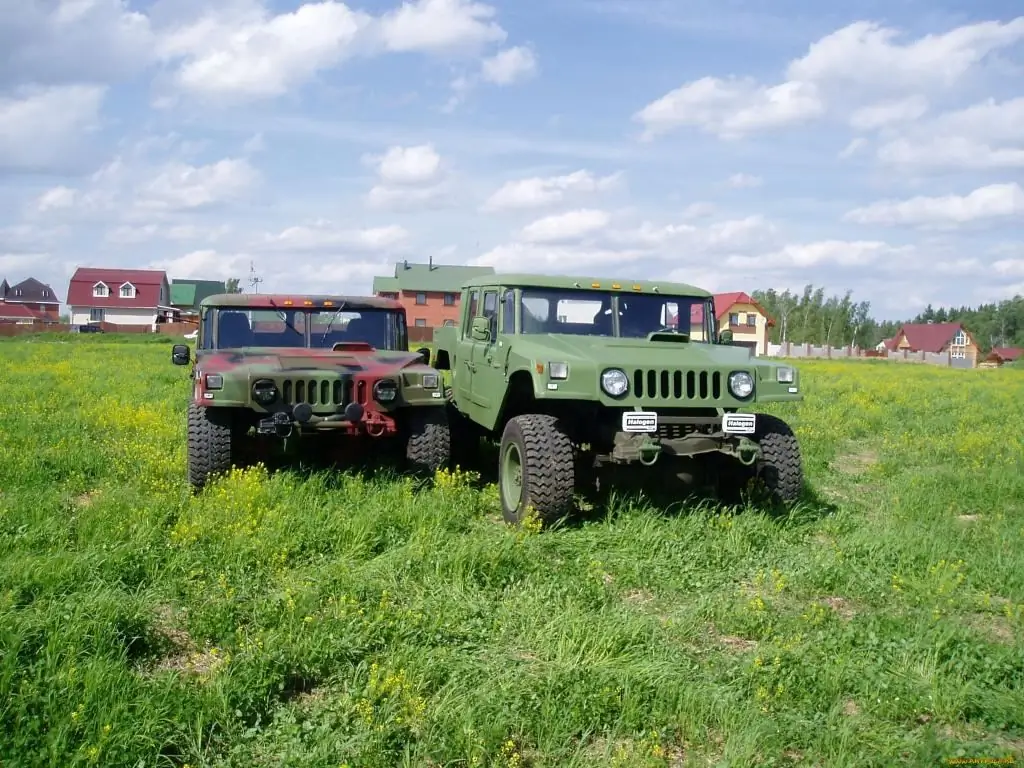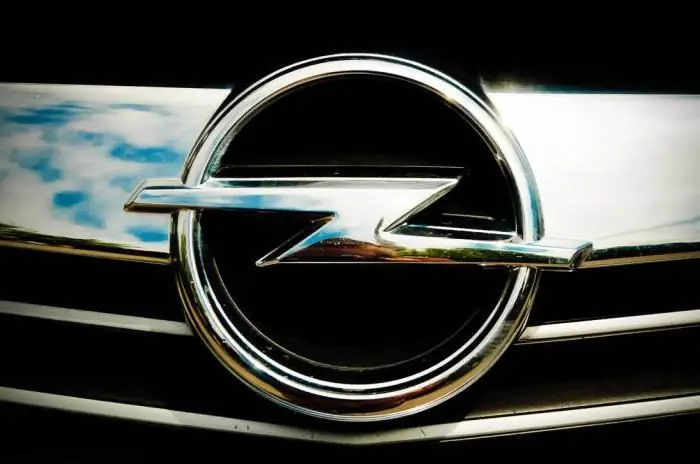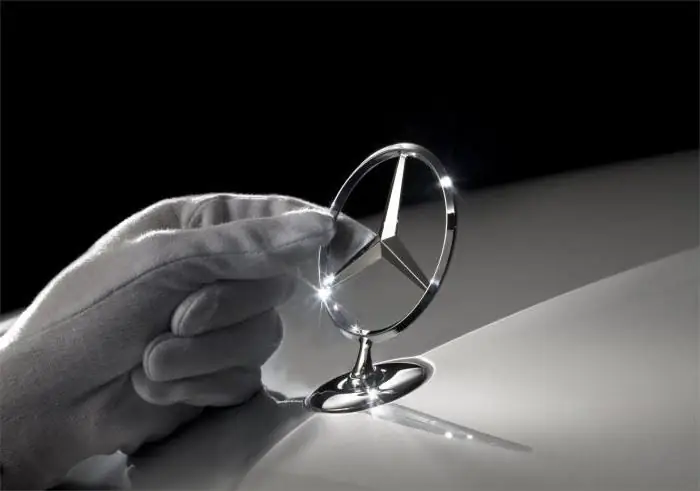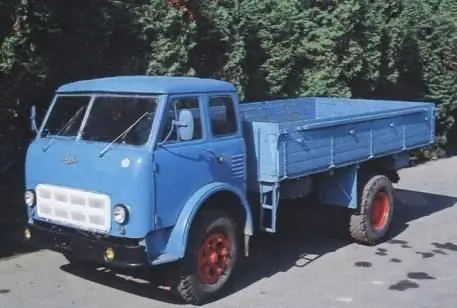2025 Author: Erin Ralphs | [email protected]. Last modified: 2025-01-22 21:14:16
Opel Blitz is probably one of the most famous trucks during World War II. The car is known because it was massive. This car was also known in the USSR. There was also an all-wheel drive version. But less was known about her, although this is one of the most advanced trucks of that time.
The very first Opel Blitz trucks, obtained as trophies, of course, aroused genuine interest from everyone. The car was interesting not only because, until the end of 1941, any trophies obtained by the Soviet army looked like a rarity - most often the soldiers gave their vehicles and other equipment to the opponents during the retreat. The products of the German automobile industry could surprise - the cars were an order of magnitude more perfect. There were no cars like the all-wheel drive Blitz in the USSR.
Zipper
The history of the German Opel Blitz truck and concurrently one of the main participants in the war began more than peacefully. The car began to be created in the 30th year. Opel, which became the property of General Motors a year ago, launched a series of modelstrucks with a carrying capacity of one ton. In Opel, creating this car, they did not care at all about the Reichswehr - then the German army was not yet distinguished by either strength or material support. Germany urgently needed inexpensive yet reliable and durable trucks.
Commercial vehicles are rarely called by proper names even now. In those years, this approach was completely new. Moreover, the “Lightning” (namely, the “Blitz” is translated as such) would suit more a sports car or a military fighter. But the car "Opel Blitz (Lightning)" was quite peaceful.

But things changed in 1935, and so did the times for the German automaker. It was this year that the construction of a modern plant was completed in Brandenburg, where it was planned to produce only trucks. Now the Reich needed as many of these machines as possible. A truck designed for 3 tons stood out in particular. He was born in the 37th.
Features and Specifications
This car was considered perfection at the time. The cabin, designed for three people, looked quite nice. As an engine, the Germans used a six-cylinder 3.6-liter unit that produced 75 hp. Exactly the same unit was then installed on the passenger flagship model from the German brand.
The engine was paired with a five-speed manual transmission and a single-disk dry clutch. The car was equipped with hydraulic shock absorbers. On a flat highway, the Opel Blitz with such a power unit could accelerate to 90 km / h, so that it was veryhigh speed for that time. Fuel consumption was between 25 and 36 liters per 100 km.
It is these models that will later become very popular in the Wehrmacht. However, along with a mono-drive car, an all-wheel drive truck was also needed. Military invasions and campaigns were to take place in many parts of the world - they are all different. Naturally, where the Reich army went, there were no roads at all.

The basic rear wheel drive version with a load capacity of 3.3 tons had a total maximum weight of 5800 kg. They released it from 37 to 44 years. The car had a wheelbase of 3600 mm, and the curb weight of the truck was 2500 kg. The car was equipped with a single fuel tank of 82 liters. The truck was also fully equipped to tow a two-ton trailer.
From the year 40, in parallel with the mono-drive version, an all-wheel drive model began to be produced. Here, in addition to the five-speed transmission, a two-speed transfer case was installed.
Engine
The power unit produced 75 horsepower with a volume of 3.6 liters. This engine was previously installed on Admiral cars, and this was a common practice for the company. The maximum torque of the motor appeared at 3120 rpm. The characteristics of the engine coincided with the Soviet ZIS-5, but the Germans already had a smaller volume, an aluminum crankcase, and a gray cast iron cylinder head.
The compression ratio of this motor was also quite "passenger". For efficient operation, the engine had to consume onlyquality fuel. This completely ruled out the possibility of using captured fuel in the East.
For this reason, in January 1942, Opel began to develop a modification of the engine with a lower compression ratio. These changes brought a reduction in power to 68 horsepower. The maximum speed was reduced to 80 km/h. In order for the car to have a good range, the truck was equipped with a 92-liter fuel tank.
With the modernization, fuel consumption also increased: the car began to consume up to 30 liters on a high-quality highway and about 40 liters in off-road conditions.
Four-wheel drive
Historians studying the German automobile industry during the war claimed that the Wehrmacht's Opel Blitz with all-wheel drive (designed in 1938) was not created at all for the needs of the army. It is very difficult to believe this. The car is more than necessary for both the Wehrmacht and the SS. The Reich had big plans. And who, if not Opel, would design and build such a car.

The base has become a little shorter in comparison with the 2-wheel drive model. A standard truck has a base of 3600 mm. The cab, along with the engine, is shifted back. The clearance was left the same as it was. It is equal to 225 millimeters. For an off-road truck, this is not much. Behind mounted dual wheels. Due to good traction, the truck could overcome slopes of 40 degrees.
In the transmission system, as already noted, a transfer case was added. Its gear ratio is 1:1.93.shifting from the top to the bottom gears was possible even on the go - you just need to use a double clutch release. For those years, such a design was rare.
All-wheel drive means increased cross-country ability and more off-road capabilities. But these advantages come at a considerable cost. So, the cross-country ability increased, and with it the fuel consumption also increased. According to passport data, the Opel Blitz truck was supposed to consume up to 40 liters. fuel in conditions of movement where there are no roads. But it must be said that where German soldiers drove these cars, fuel consumption was not at all important. The maximum speed of the car on the highway reached 85 km / h.
Tests have shown that this truck model does its job well. And so, in 1940, the car was put into production. The first tests on the share of this light truck took place already in the 41st year. The car was tested in Africa - the trucks were purchased for service in Rommel's buildings.
Deprivations and hardships
The all-wheel drive version of the Opel Blitz (see photos in our article) turned out much better than the planned blitzkrieg. The war for Germany, and for the whole world, turned into a huge bloody tragedy. She tested not only people, but also equipment, including cars.

And let the German cars were perfect, but in the autumn of 1941 they were literally buried in Russian mud. In winter, the engines were tested by Russian frosts so that they stopped starting at all. Under such conditions, all-wheel drivethe German Opel Blitz truck has gradually become a shortage.
Modifications
"Blitz" was widely used in almost all formations of the German army. They delivered cargo, towed guns, transported infantry.
A variety of models of metal and wooden bodies with sides of different heights, equipped with awnings, benches and other devices were installed on the truck chassis. Based on the platform, various modifications were created. The Opel Blitz turned out to be very versatile.
Truck to transport the wounded
The German company "Meisen" installed a round ambulance on the platform of the truck, in which the wounded were transported and placed in them operating and field laboratories.

The company also produced universal and fire trucks. The base model was an automobile pump built on a rear-wheel drive platform. A fire tank was created on an all-wheel drive base.
Bus W39
This is probably the most famous modification. You can see her in the photo below.

The bus was intended for the needs of the army and came with an all-metal body. Inside could fit 30-32 people. These cars were produced from 39 to 44. The model was intended for the transportation of officers, for sanitary purposes.
The headquarters, printing houses were equipped in these buses. The truck could reach the same speed as the base model. Fuel consumption was at least thirty liters per hundredkilometers.
Modification "Mule"
From 42 to 44, on the basis of the all-wheel drive chassis, Opel produced about four thousand half-track tractor trucks. You can see one of the models in the photo below.

Lightweight engines were used in the modification. The license was purchased before the war. The truck was equipped with track rollers, as well as a system for changing the speed of rotation of the tracks.
It was one of the most successful trucks. This model was able to take a place between the similar products of Ford and Klöckner-Deutz. The mass of the car was almost six thousand kilograms, and 50 liters of fuel were needed per 100 kilometers. The speed at which the truck was able to accelerate was no more than 38 kilometers per hour (due to the high curb weight).
Today you can buy "Opel Blitz (Mul)" 1:35. This is a reduced scale model. It will be of interest to those who are fond of military and automotive history. Other modifications were created on the basis of the chassis, however, these are the most basic of them and the most famous.
“Blitz” after the war
In the summer of 1944, after active bombing, the two main Opel factories collapsed. It was decided to transfer the production of these trucks to the Daimler-Benz factories. After the end of the war, all the equipment was taken to the USSR, and Opel, with the help of the Americans, began to restore production and continued to produce these trucks.
In a few years, the Opel Bedford Blitz will be released, which will have good technical characteristics andequipment. But that's another story.
Conclusion
So, we found out the history of the creation of the Opel Blitz truck. The German "Lightning" is an analogue of the Gorky "lorry". However, our Soviet technology turned out to be much more enduring. The cargo "Opel" refused to start in severe frosts and easily sat "on its belly" because of the 22-centimeter clearance. To date, these machines can only be seen as a museum exhibit or reduced models in private collections.
Recommended:
Russian "Hammer": characteristics, photos and history of creation

Russian "Hammer": specifications, base, history of creation, modifications, photos. Russian "Hammer" based on GAZ-66: description, types, operation, stages of creation, features. Russian military "Hammer": parameters, pros and cons
Scooter "Ant" - history and characteristics

Motor scooter "Ant" - a great vehicle, which is still used by Russian farmers in their work. It has excellent specifications. Too bad it's no longer in production
German cars: advantages and disadvantages. List of German car brands

German cars are famous all over the world for their quality and reliability. Everyone knows very well what cars are produced in Germany. Beautiful, powerful, comfortable, safe! This is a proven fact over the years. So, it’s worth briefly talking about all the most popular brands, as well as which models are most in demand among the inhabitants of our country and Europe in general
Badges of car brands and names. German, American and Chinese car brands and their badges

Badges of brands of cars - how diverse they are! With and without a name, intricate and simple, multi-color and plain … And all are very original and interesting. So, since German, American and Asian cars are the most common and in demand, then using the example of their best cars, the topic of the origin of emblems and names will be revealed
"MAZ 500", truck, dump truck, timber truck

The Soviet truck "MAZ 500", the photo of which is presented on the page, was created in 1965 at the Minsk Automobile Plant. The new model differed from its predecessor "MAZ 200" in the location of the engine, which was placed in the lower part of the cab. This arrangement allowed to reduce the weight of the car

